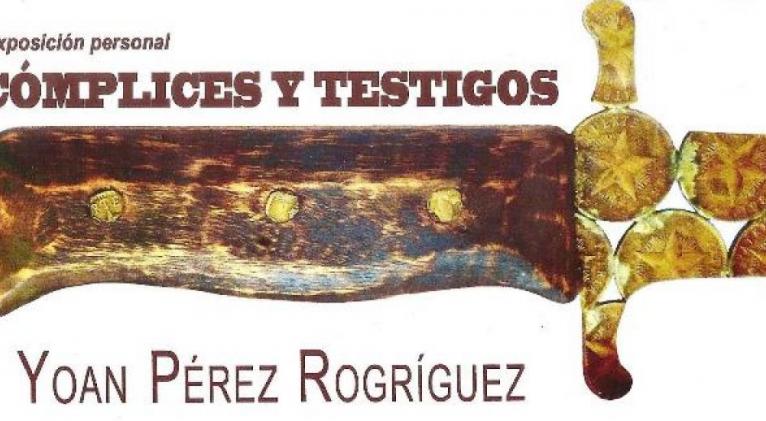“Cómplices y testigos:” An Exhibition Showing New Ways to Visualize Cuba
especiales

When in 2013 Yoan Pérez was one of the Cuban artists involved in Post-it (the expo and sale of young contemporary art), new marketing opportunities opened for him that he had not known until then. However, his work revealed the same esthetic and conceptual coherence that one can see a year later in the exhibition Cómplices y testigos (Accomplices and Witnesses).
Consisting of fourteen small- and medium-format pieces, the exhibition offers a symbolic representation of history from the use of Cuban bills and coins to which the artist gives new meaning in visual discourse. Other materials – such as feathers, branches, castoffs, glass and fossil remains – also abandon their primary function to make subtle references to historical characters and events, far beyond stereotyped clichés.
According to Yoan, his artistic interest in the passage of time began when he was studying at the San Alejandro Academy. But it was not until last year that he focused his attention on paper money and its possibilities as a means of expression.
“I’m interested in working with money as a witness to history, like those documents that give shape to important events or periods that have occurred in Cuba. Some of the pieces are objects that I’ve found and with which I’ve created a story. There are others whose objective is that the viewer makes up a story based on what is seen,” he stated in an interview with Cubanow.
Demystifying the (sometimes Manichaean) ways in which Cuban history is approached is one of the exhibit’s principal merits, even more when the double role of being judge and participant may, inexorably, be the determining factor in a creative world. However, Yoan Pérez is able to transmit, at the visual level, his view of certain historical events from a deliberately critical perspective.
In this way, his work is able to interiorize and discover the story behind everyday things, while at the same time it discourses on a reality that faces the ups and downs of memory and oblivion, as explained by specialist Maeva Peraza in the exhibition catalogue.
Likewise, she praises the elements that distinguish this young artist’s work, such as a visual refinement, his interest in exploring the veracity and durability of what is observed, and in drawing together the essence of objects until they are completely renewed.
“What is attractive about this exhibition lies in the approach and its means, which invite us to rediscover ourselves in each small story, to reconstruct and shape the known referent in the same way that the artist has done it, simulating the alternations of a vital passage,” says Peraza.
It is precisely the reinterpretation of history based on everyday life, and the possibility of drawing near to it - like a continuous process of which we are a part - that provides the exhibition with suggestive interpretations about what defines us as a nation. Visualizing Cuba, which is ultimately visualizing ourselves, seems to be one of the greatest challenges that this artist invites us to face.
For Cora Sotolongo, the main curator of the exhibition on display at Havana’s Provincial Center of Visual Arts and Design, the key is understanding history from Yoan’s personal representations of the value of money.
According to him, one of the main objectives is to “see how our way of being, our ideas, aspirations, and convictions have developed since the formation of our identity up to our days.” This is a suggestive opportunity, through art, for bringing us closer to what defines us as a country.
Translated by Dayamí Interián













Add new comment